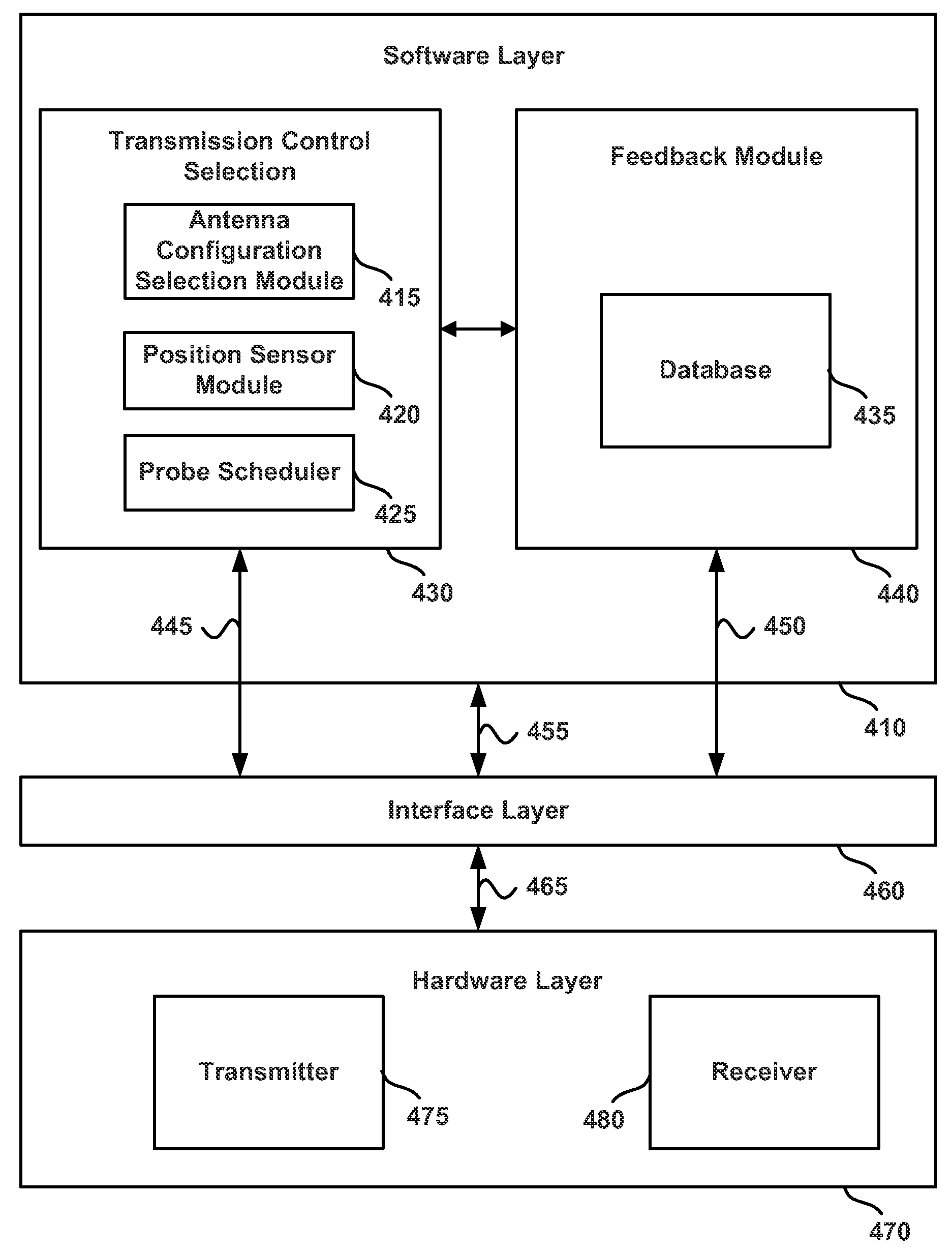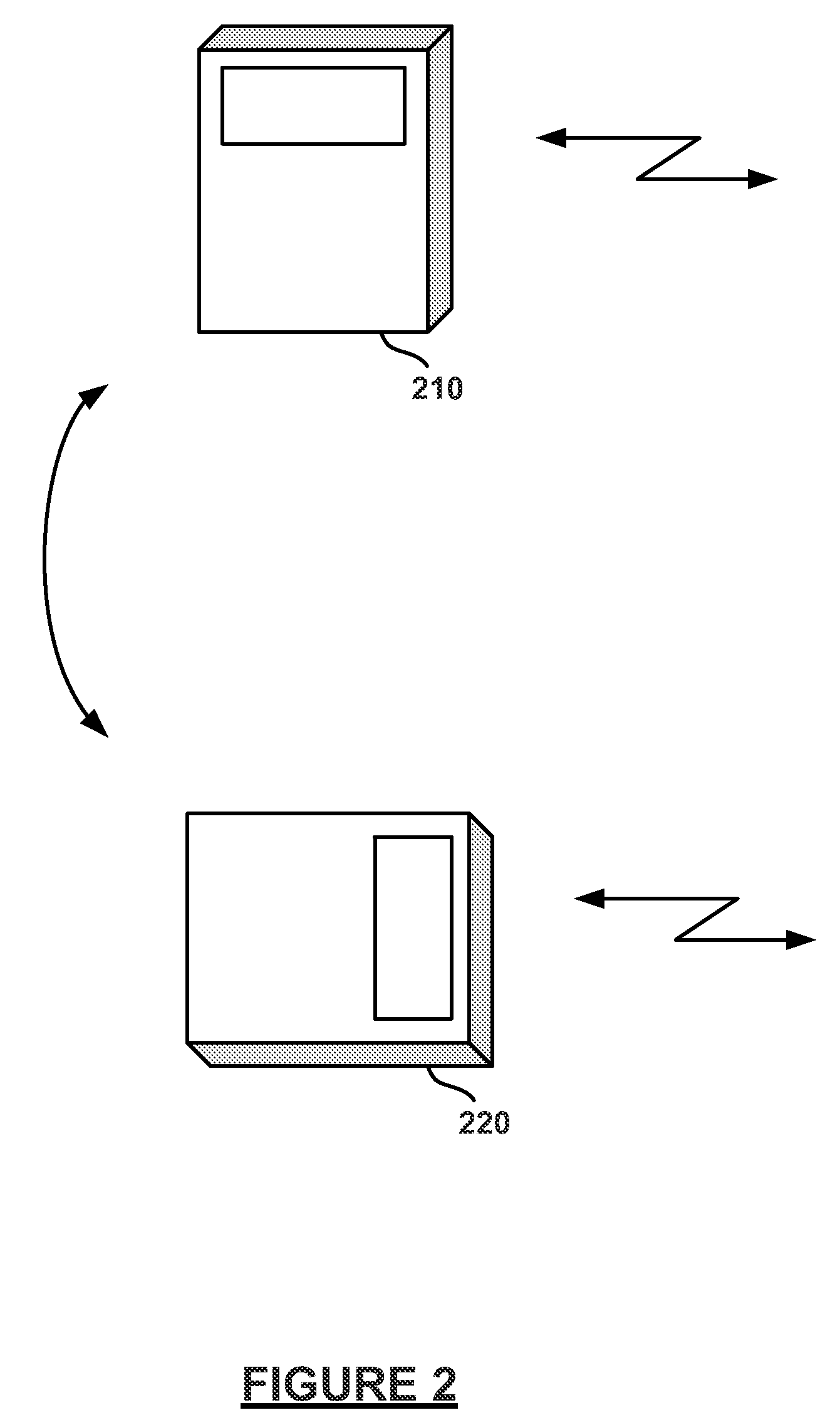Adjustment of Radiation Patterns Utilizing a Position Sensor
a position sensor and radiation pattern technology, applied in the field of wireless communication, can solve problems such as changes or disturbances, wireless links, and other radio transmitting devices, and achieve the effect of reducing the risk of interference, and reducing the service li
- Summary
- Abstract
- Description
- Claims
- Application Information
AI Technical Summary
Problems solved by technology
Method used
Image
Examples
Embodiment Construction
[0026]A device for a wireless RF link to a remote receiving device includes an antenna apparatus with selectable antenna elements for transmitting and receiving an RF signal, a signal converter for converting between encoded signals and RF signals, a processor for controlling the signal converter and the antenna apparatus, and a position sensor. As the device is moved, displaced, or re-positioned, the position sensor detects a change in position and provides position information to the processor. The processor receives the position information from the position sensor, selects an antenna configuration based on the position information, and selects a physical data rate to maximize data transmission speed. The processor then provides an encoded signal to the signal converter and controls the converter and antenna apparatus to provide an RF signal through the antenna elements of the selected antenna configuration.
[0027]For example, when the device is in a first position in a vertical a...
PUM
 Login to View More
Login to View More Abstract
Description
Claims
Application Information
 Login to View More
Login to View More - R&D
- Intellectual Property
- Life Sciences
- Materials
- Tech Scout
- Unparalleled Data Quality
- Higher Quality Content
- 60% Fewer Hallucinations
Browse by: Latest US Patents, China's latest patents, Technical Efficacy Thesaurus, Application Domain, Technology Topic, Popular Technical Reports.
© 2025 PatSnap. All rights reserved.Legal|Privacy policy|Modern Slavery Act Transparency Statement|Sitemap|About US| Contact US: help@patsnap.com



